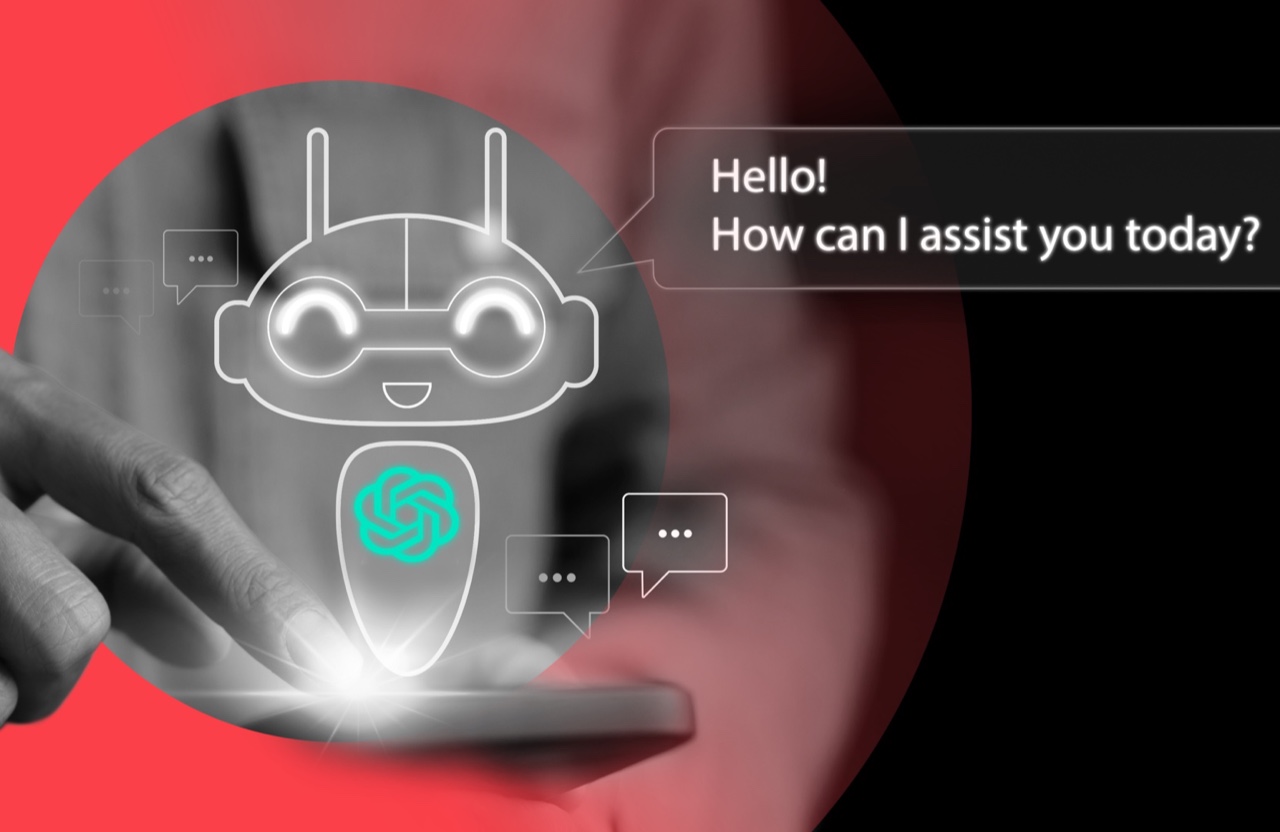What issue can we solve for you?
Type in your prompt above or try one of these suggestions
Suggested Prompt



Transportation & Mobility
3 Opportunities to Seize the Power of AI in Automotive
Artificial intelligence (AI) did not just hit the street in automotive, but it’s quickly gaining traction with new use cases that illustrate its potential for mobility companies.
We have entered a new era that marks the democratization of AI. It’s no longer a technology for data scientists and tech gurus. AI has become accessible to lay users through various open-source AI applications that make the technology consumable and actionable. When applied strategically, it can be a unique differentiator and a strong accelerator for growth among automotive companies.
Currently, numerous companies are exploring AI's potential to enhance their operations. Once integrated and scaled, AI is poised to have a profound impact on the mobility industry. However, business leaders must be willing to embrace AI experimentation. It’s important to capture the opportunity now, rather than wait for perfection and mass adoption.
So, where should OEMs, aftersales and other mobility players turn next? We see three powerful ways to apply AI today to gain a competitive advantage.
Elevating the driver experience through predictive maintenance and in-vehicle personalization
AI will continue to elevate the driver experience in terms of vehicle performance, safety and hyper-personalization.
For instance, being able to sense and respond to streaming data coming from a connected vehicle will transform maintenance as vehicle owners or manufacturers can proactively solve vehicle problems before they arise. Perhaps this is why the global market for automotive predictive maintenance is expected to grow at a CAGR of 26.2 percent from 2023-2029.1
Addressing maintenance or repair issues before a service event happens will eliminate downtime for vehicles, reduce maintenance costs and keep vehicles on the road.
AI will bring the mechanic where they are needed
AI also offers a new level of convenience for making repairs that can happen in real time at a user’s home, or place of business.
Consider battery performance. Sensors on a vehicle can indicate when the battery is at risk of failure based on data about travel speed, weather conditions, traffic and more. AI in the future could also indicate how to optimize the battery based on those same conditions. This is especially useful for electric vehicles that rely on a battery charge or for commercial vehicles that bleed money when they are not operational.
Likewise, data from sensors could reveal safety concerns. AI will enable a vehicle to react and respond based on driver behavior. Imagine a head dropping forward indicating fatigue, or hard braking indicating erratic driving. Flagging safety issues will not only keep vehicle operators safer, but it could also inform insurers of the likelihood of having an “insurable” event, leading to more nuanced data around risk profiles and allowing insurers to adjust premiums based on real-time data. Companies will identify more of these potential “flags” as they experiment with the use of AI.
Moreover, the potential applications of AI in the automotive industry can enhance day-to-day driver experiences through hyper-personalization. By integrating AI technologies, in-vehicle screens could showcase tailored content based on individual user preferences. Additionally, AI can actively engage with the user by providing relevant recommendations based on real-time conditions and historical data.
For instance, if the driver typically orders a black coffee on the way to work, at the standard commute time the vehicle could send a push notification that informs the driver of the nearest coffee shop, along with turn-by-turn directions and a discount offer.
Taking the kinks out of retail experiences
When we consider the shopping journey for a vehicle buyer, there are numerous points of friction. AI can become a sherpa of sorts, helping to eliminate or improve potential breakdowns in the process and navigating users beyond them. It can decipher signals in market behavior that are based on patterns across a collection of data points.
OEMs will continue to sell in a multi-tier environment, so it’s important to fix the cracks in the experience—whether it’s direct to consumer or through a dealership. OEMs, dealers and third-party brands can collaborate and share data to maximize the use of AI and address operational inefficiencies. Cleanrooms offer a shared environment in which brands that want to enrich experiences and hyper-personalize without moving first-party data can collaborate. Increased collaboration through AI will improve both the retail and ownership process for customers by creating faster seamless experiences with data managed centrally.
Taking the wheel at lease renewal time
For example, rather than a customer contacting a dealership when their lease is about to expire, AI will predict the best course of action for the customer and give the dealer multiple opportunities to engage the customer beforehand. Rather than waiting for overt signals, marketing teams could engage earlier with messaging about having the vehicle inspected, getting it replaced or offering buying options. AI-enabled recommendation engines can notify a customer (if they are looking for a specific vehicle) that it will be available at a certain location at a certain time. Offers can be tailored for a specific persona, such as the car enthusiast looking for a fully loaded vehicle. As AI gets smarter, it will get even better at customizing offers and communications.
Similarly, AI data can be used to improve after-sales retail. Vehicles today are more complex—they are essentially computers on wheels. The need for specialized skills to service these vehicles is greater and there is a shortage of service techs. Historically, OEMs create service bulletins or job aids to help techs fix issues on vehicles. In the future, AI can arm junior technicians to ask questions, troubleshoot, identify problems and make repairs they otherwise wouldn’t have the expertise to do. This advantage improves dealership performance as they enhance quality by fixing issues correctly the first time.
Organizational enhancements
On the heels of the chip shortage and other supply chain challenges, there is increasing pressure to have better and future-forward intelligence around supply inventory. Knowing—or better yet, predicting—what inventory is available can improve marketing efforts, hyper-personalization and the overall buying experience for customers. AI offers a tremendous opportunity to better model and predict future demand and supply of vehicles. Imagine knowing in advance who will be buying what vehicle and when. More detailed prediction analytics will inform the timing of offers, what kind of offer will resonate most with a customer and how an OEM or dealer can personalize the go-to-market offer faster based on customer data about preferences or past purchases.
AI also comes into play in the automotive aftermarket, which is projected to grow at a rate of over 6.4 percent CAGR from 2022 to 2028.2 The sequencing of parts is crucial to the production of a vehicle. Many suppliers struggle with overstock and dealers, or those fixing vehicles cannot always access the parts they need. In fact, automotive brands are losing market share to Independent Aftermarket (IAM) participants, which include suppliers of spare parts and accessories, independent dealers and garage service providers.
With the help of AI, digital twin technology can create a virtual replica of an entire vehicle (including its software, warranty data, service history and performance) and they can also simulate warehouse supply—and even an entire organizational structure. Organizations gain a view into real-time supply and demand.
This comprehensive, data-driven picture can also help with determining customer purchase propensity, loyalty, brand affinity, or product affinity, and it can also support stock optimization because supply and demand are accurately modeled.
Avoiding bumps in the road
AI is driving many opportunities in automotive, but to fully take advantage, companies need some basics in place. First, although it’s easy to buy and implement AI solutions, a business strategy should be driving and informing the use of AI. What is the organization trying to achieve and how can AI help solve those challenges or enable working in new ways?
To build AI models responsibly and minimize bias and risk, it will be important to know who has access to the models and who is consuming the models. Hold them accountable for ensuring that raw or structured data hasn't been changed by a model. Make data accessible in a safe environment for data scientists and analysts to experiment. This is how new use cases for AI will be revealed and ultimately adopted.
What’s next?

AI is here to stay and the possibilities it offers continue to grow. Automotive companies looking to begin or continue down their journey should buckle up for an exciting ride. To stay competitive, companies must begin their journey now and embrace the small sprints and progressive change in this fast-evolving environment.
By learning more about AI’s power to drive automobile change, OEMs and other automotive players will enter a new era of performance.
Publicis Sapient is a digital business transformation company. We partner with global organizations to help them create and sustain a competitive advantage in a world that is increasingly digital. We operate through our expert SPEED capabilities: Strategy and Consulting, Product, Experience, Engineering and Data, which, combined with our culture of curiosity and deep industry knowledge, enables us to deliver meaningful impact to our clients’ businesses through reimagining the products and experiences their customers truly value. Our agile, data-driven approach equips our clients’ businesses for change, making digital the core of how they think and what they do. Publicis Sapient is the digital business transformation hub of Publicis Groupe, with 20,000 people and over 50 offices worldwide. For more information, visit publicissapient.com.
Related Reading
-
![]()
Q&A With ChatGPT: How Generative AI Is Shaping the Future of Automotive
Explore what role Generative AI models play in the future of the automotive industry through an “interview” with the AI language model (GPT-4).
-
![]()
Learn how to leverage customer data to enhance your business’ profitability and customer experience.
Publicis Sapient’s global survey of why, how and when consumers are willing to share customer data.
-
![]()
How generative AI will revolutionize your business
Businesses can use generative AI to enhance workflows rather than replace human roles—with a more human-AI collaboration in mind.












